#ancient statue
Text
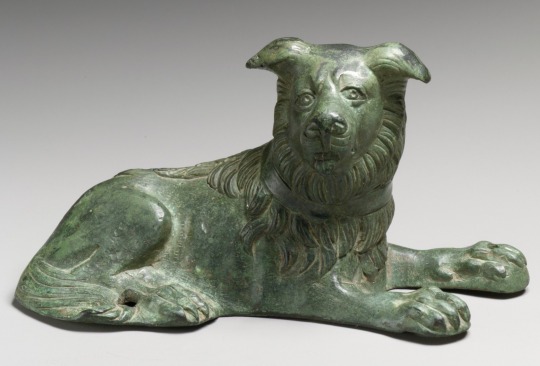
Bronze statuette of a dog
Roman
2nd-3rd century CE
#roman art#dogs#bronze#bronze statue#animals in art#ancient art#ancient people#ancient statue#statue aesthetic#aesthetic#beauty#ancient artifacts#artifacts#antiquities#beautiful animals#dogs of tumblr#cute dogs#modern art#art history#aesthetictumblr#tumblraesthetic#tumblrpic#tumblrpictures#tumblr art#tumblrstyle#artists on tumblr
1K notes
·
View notes
Text
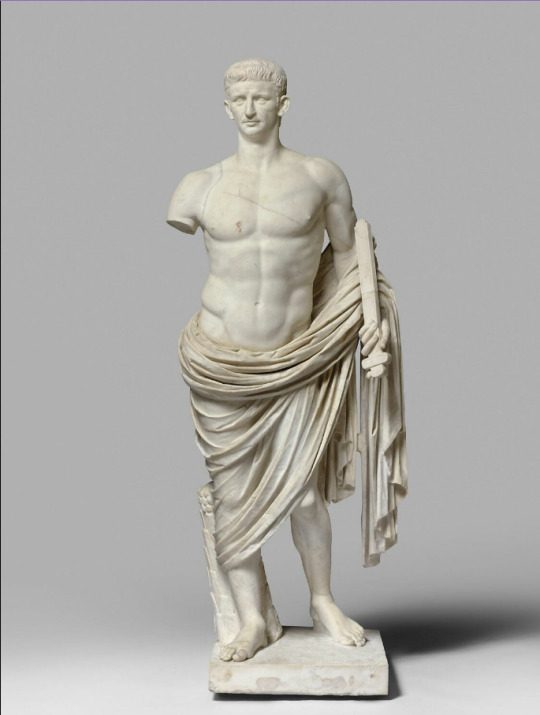
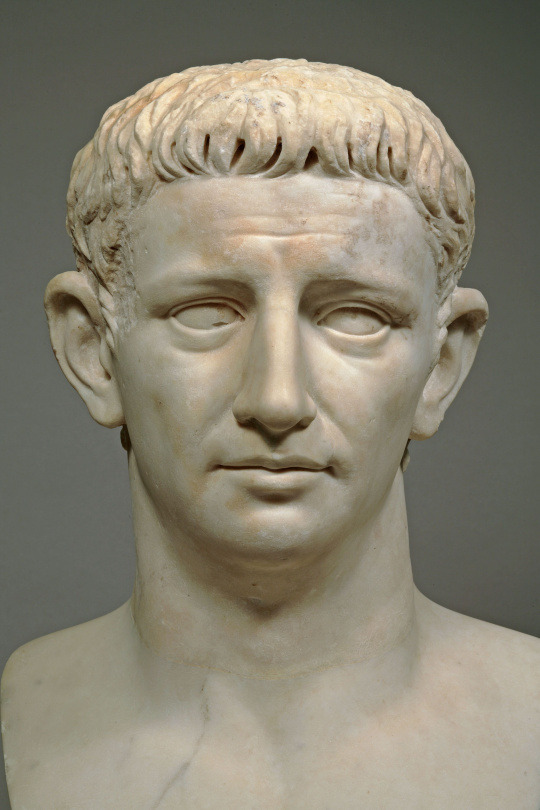
The statue of Emperor Claudius discovered in Gabii near Rome at the end of the 18th century, now in the Louvre.
#ancient rome#emperor claudius#roman empire#ancient art#julio claudian dynasty#ancient culture#ancient history#ancient civilisations#ancient statue#statue#roman emperor#tiberius claudius caesar augustus germanicus#claudius
99 notes
·
View notes
Text
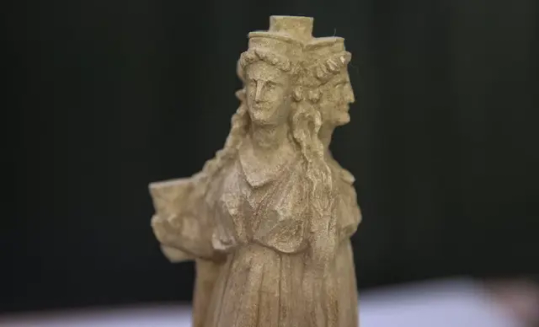
A 2,300-Year-Old Three-Headed Statue of Goddess Hecate Discovered in Turkey
In the ancient city of Kelenderis in Mersin, located in the south of Turkey, the statue of the 3-headed goddess Hecate, which is evaluated to be 2300 years old, and ceramics belonging to the Hellenistic period were unearthed.
The ancient city of Kelenderis is located at the Mediterranean coast of Turkey in modern town of Aydincik, which is in the province of Mersin.
In the ancient city of Kelenderis, the excavation and restoration/conservation works started in 1987 continue uninterruptedly. There have been exciting developments in the studies carried out this year under the coordination of the Ministry of Culture and Tourism and Batman University.
Head of the excavation, Associate Professor Mahmut Aydın, stated that the Roman period floors were unearthed in this season’s excavations and that they found a large amount of Hellenistic ceramics in these floor fillings.
Statue depicts three similar figures of Goddess Hecate joined together and facing in different directions. This is because these statues were used at Crossroads. These statues, which are few in number, were placed on pedestals, where the directions were inscribed. Hecate statues also marked boundaries.

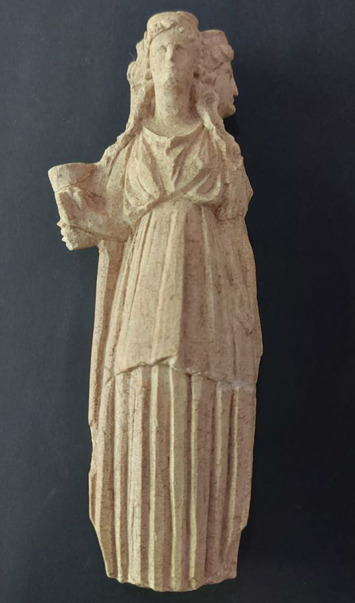
Stating that the Hecate figurine was found in the underfloor fillings behind the odeon, Aydın continued as follows: “The 3-headed Hecate figurine was found in the layer where the ceramics were found. The figurine is about 20 centimeters.”
“Looking at the connection between the goddess Hecate and Kelenderis, we know that there is a Hecate temple in the ancient city of Lagina in Muğla, and an inscription found there indicates that Kelenderis is among the cities that participate in competitions held every five years in honor of Hecate. Furthermore, Kelenderis is also among the cities that show respect for the sacred area of Hecate and pledge not to attack it. Therefore, the discovery of the Hecate figurine in this excavation site is meaningful. We evaluate that the work is 2300-2400 years old and belongs to the Hellenistic period.”
In ancient Greece, Hecate was venerated as a goddess of the underworld, capable of both good and evil. She was associated with magic, witchcraft, the moon, and creatures of the night such as ghosts. Her face was also depicted on doorways.
The work will be delivered to the Silifke Museum after its examination.
By Oğuz Büyükyıldırım.
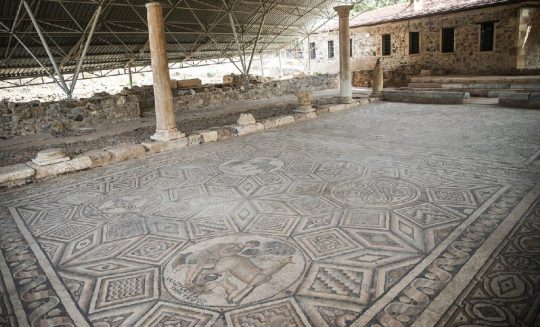
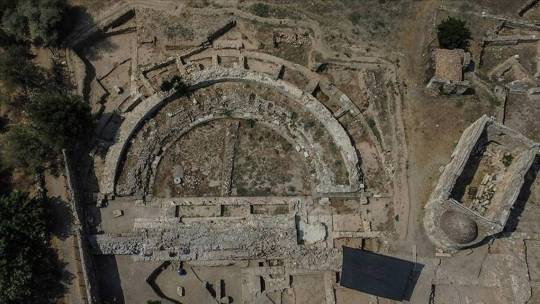

#A 2300-Year-Old Three-Headed Statue of Goddess Hecate Discovered in Turkey#ancient city of Kelenderis#goddess of the underworld#hellenistic period#statue#ancient statue#ancient artifacts#archeology#archeolgst#history#history news#ancient history#ancient culture#ancient civilizations#roman history#roman empire#roman art#greek art
98 notes
·
View notes
Text

cat beanies in every lifetime
#my art#saw the pic on twitter and i Had to#drm#dreamwastaken#dream fanart#dreamwastaken fanart#dreamwastaken art#illustration#fan art#procreate#digital art#art#ancient statue
112 notes
·
View notes
Text


The Kiss (Church of Saint Francis of Assisi b. 1766, the Sacristy) - Ouro Preto, 2023
#picofthenight#travel#brazil#minas gerais#original photographers#photographers on tumblr#ancient art#ancient architecture#kiss#art#rococo#saint francis of assisi#ancient statue#architecture#religion#catholicism#catholic church#photoofthenight
31 notes
·
View notes
Text

There is a full-length NUDE statue identified as Mark Antony in Egypt?? How did I not know this before? Why can't I find image of it anywhere on the internet?
#a noble ruin#mark antony#marc antony#marcus antonius#rome#egypt#cairo egyptian museum#cairo#egyptian museum#roman tag#ancient statue
12 notes
·
View notes
Text
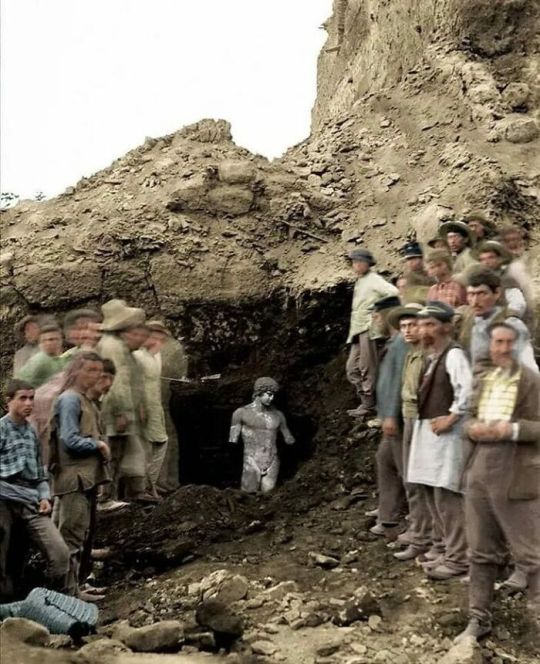
The Discovery Of The Ancient Statue Of Antinous Found In Delphi, Greece During An Excavation In 1894 - Colorized photo.
8 notes
·
View notes
Photo

The statue of a young and beardless Heracles was unearthed in Philippi, Macedonia, Greece. The statue dates to the 2nd Century AD and it was found within the ruins of a building dating to the 8th - 9th Century, where it was used as decoration. More and more findings are evidence which points at the use of ancient art and scupltures for the decoration of Byzantine houses and other buildings, further weakening the dated argument that the Byzantine Empire maintained a stance of hostility towards Classical Antiquity.
Source
#greece#grecoroman art#statue#ancient statue#ancient art#heracles#hercules#roman era#byzantine era#byzantine empire#roman empire#greek culture#philippi#macedonia#mainland#kavala
141 notes
·
View notes
Text
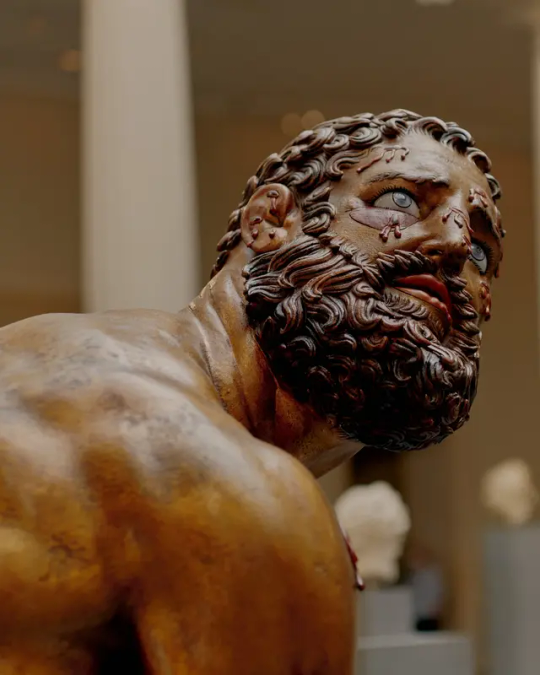

Vinzenz Brinkmann's reproductions as a part of an exhibition Chroma - polychrome statues of Ancient sculptures in color.
Featured here: the so-called Terme Boxer from the Quirinal in Rome and a marble funerary stele of Phrasikleia (detail).
Photo source: 🏺
7 notes
·
View notes
Text

Bronze portrait bust of a man
Roman
ca. 50 BCE-54 CE
#ancient art#ancient people#statue#bust#roman art#roman culture#antiquities#ancient history#classical art#classical sculpture#ancient sculpture#ancient statue#sculpture art#aesthetic#beauty#art history#aesthetictumblr#tumblraesthetic#tumblrpic#tumblrpictures#tumblr art#tumblrstyle#artists on tumblr
88 notes
·
View notes
Text
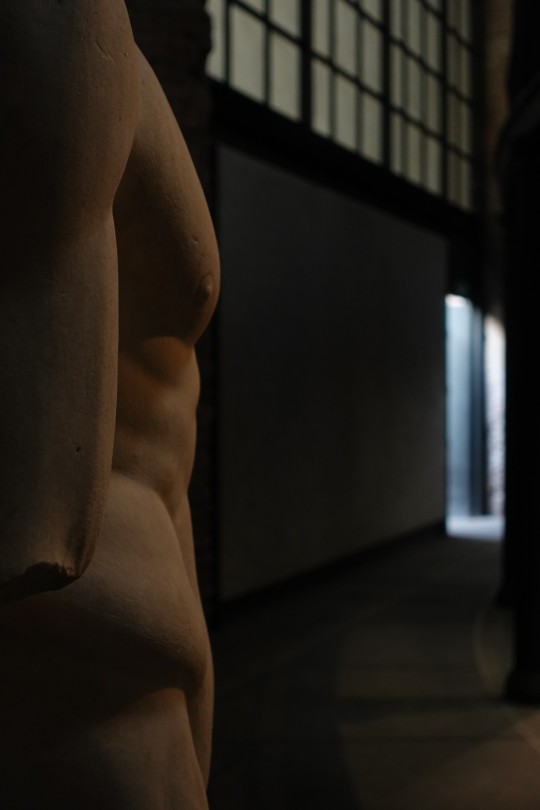
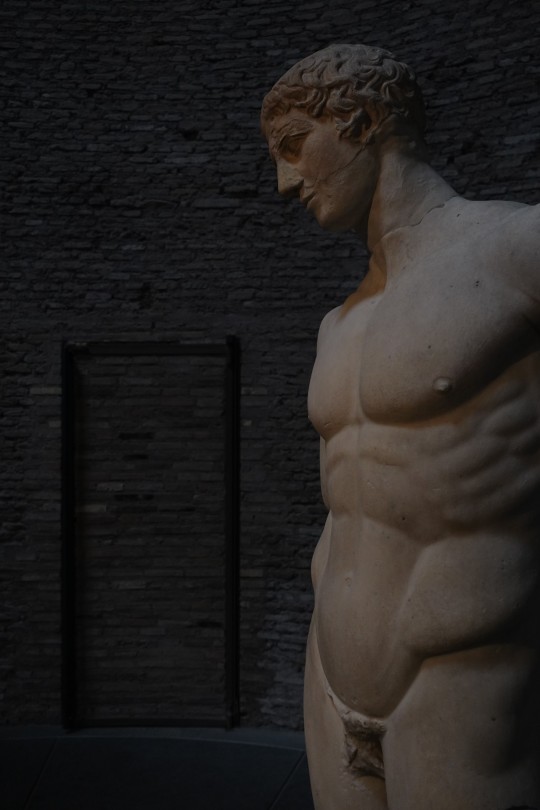
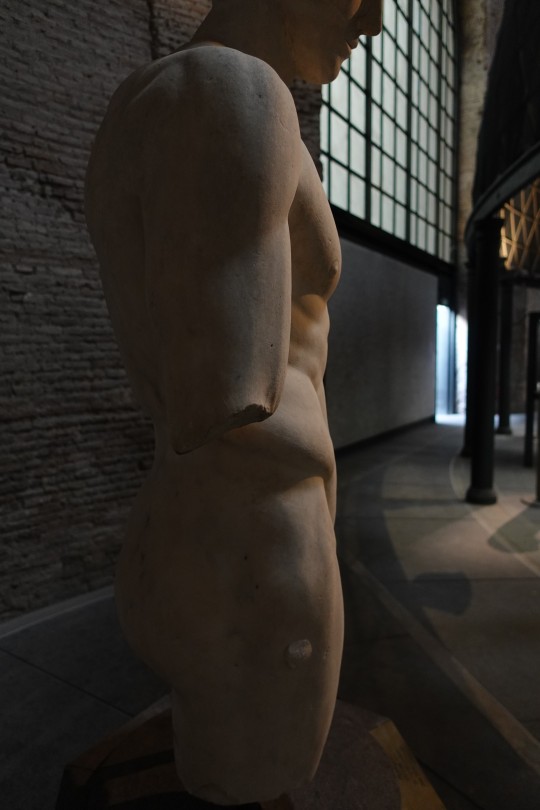


old time masculinity. - presso Museo dell'Arte Salvata
47 notes
·
View notes
Text

Head of Ancient Greek Statue of Dionysus Found in Libya
In a stream, an archaeologist working in the ancient Greek city of Cyrene in todays Libya, found the head of the statue of Bacchus, also known as Dionysus in Greek, the god of wine and theater.
Archaeology in ancient Greek city of Cyrene
While carrying out research in the city of Shahhat near the ancient Greek city of Cyrene in eastern Libya, an archaeologist detected something of interest. Nestled in the foothills of the al-Jabal al-Akhdar region, Issam Al-Menfi spotted a severed part of an ancient statue.
The item is the third to be discovered since Storm Daniel hit the eastern region of Libya last September, according to Libyan News Agency. It was collected by Menfi for scientific purposes.
The agency confirmed that the head of the statue is that of Bacchus, as the Romans called him, or Dionysus, as he was known to the ancient Greeks. The god was symbolic of a number of things, including wine-making, orchards and fruit, vegetation, fertility, festivity, insanity, ritual madness, religious ecstasy, and theater.
Cyrene is believed to have been founded in 631 BC by Greeks from the island of Thera (Santorini), located in the Aegean Sea. The settlers’ first ruler, Battus, founded the dynasty of the Battiads, which ruled the city for eight generations until 440 BC.
The city grew under the rule of the Battiads, eventually encapsulating several ports known today as Marsa Susah, al-Marj, and Benghazi.
With the rise of Ptolemaic Egypt in 323 BC, Cyrene prospered intellectually and became one of the classical world’s most influential places. In due course, with its great philosophers and renowned medical school, the city caught the attention of the Romans, who brought it under their control in 96 BC.
Between the years 67 and 30 BC, Cyrene merged with the then Roman province of Crete, where the provincial capital was located. Cyrene became the chief city. Archaeology in Cyrene has been particularly fruitful.
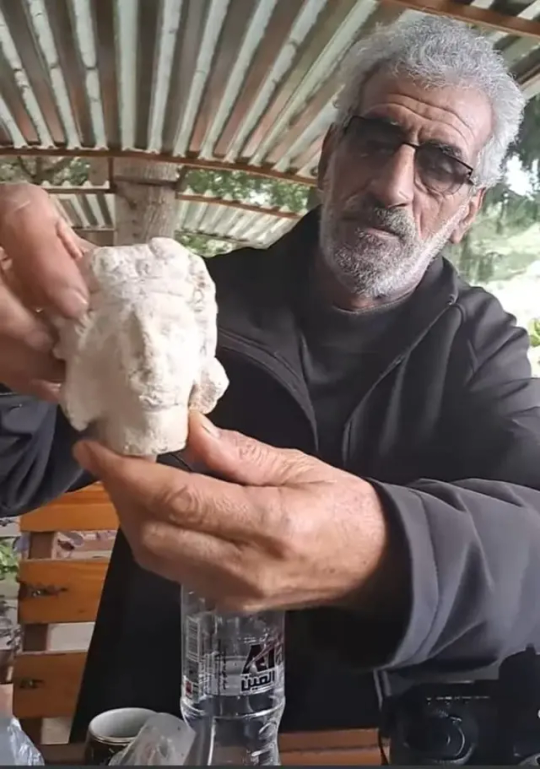
Another Sculpted Head of a Dionysus Statue Discovered in Aizanoi
Another manifestation of the sculpted head of Dionysus was discovered earlier in the ancient Greek city of Aizanoi in today’s western Turkey. It was found alongside the marble head of Aphrodite, the goddess of love. Aizanoi, like Cyrene, was an important political and economic center in Roman times.
At the time of unearthing, excavation coordinator Gokhan Coskun told Anadolu Agency: “These are important findings for us, as they show that the polytheistic culture of ancient Greece existed for a long time without losing its importance in the Roman era.”
Coskun, an archaeologist at Dumlupinar University in Turkey, went on to explain that the statue heads had been found in a previous dig but weren’t unearthed until some time after in a creek bed in Aizanoi. The archaeologist believes the findings point to a possible sculpture workshop in the region.
In August, a statue of the ancient Greek goddess Hygieia, the goddess of health and cleanliness, was also unearthed in Aizanoi.
By Matthew Norman.
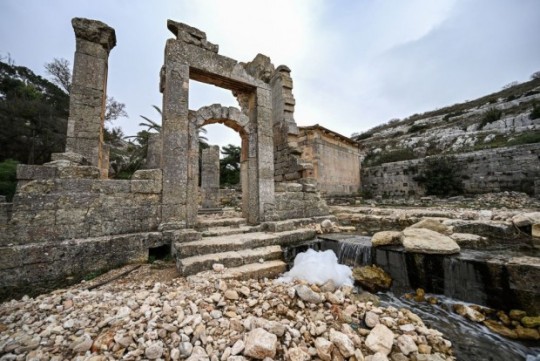

#Head of Ancient Greek Statue of Dionysus Found in Libya#ancient Greek city of Cyrene#statue#marble statue#ancient statue#bacchus#dionysus#ancient gods#ancient artifacts#archeology#archeolgst#history#history news#ancient history#ancient culture#ancient civilizations#roman empire#roman history#greek history#greek art#roman art
41 notes
·
View notes
Text


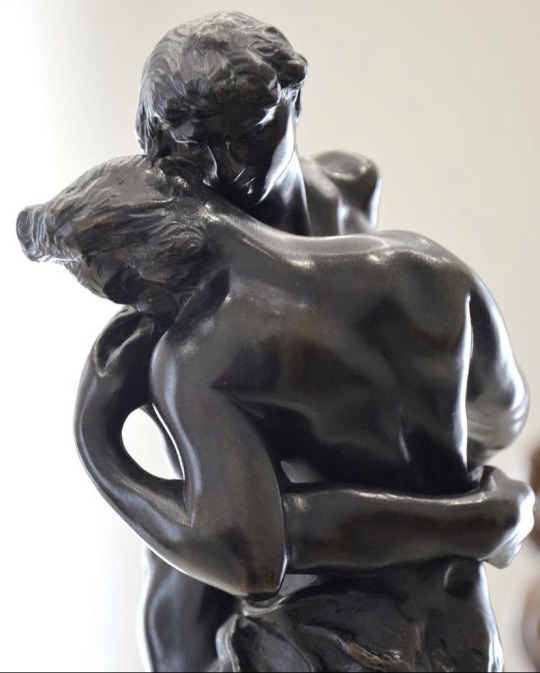

statues of lovers holding each other in embrace. almost melting into one another..
#statues#ancient statue#statues of love#ethereal art#embrace#physical touch#hold me closer#melting into you#lovers#historical romance#ancient love#love that withstands time
30 notes
·
View notes
Text
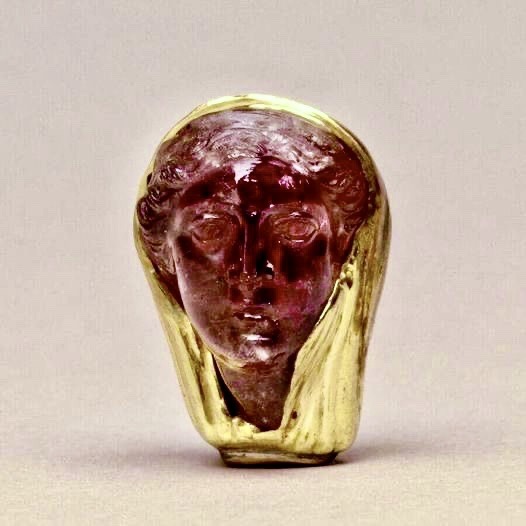
Carved Figurine, Greece, 17th c. BC.
#porcelain suit#historical artifacts#artifact#artifacts#greek aesthetic#greek posts#greek art#greek gods#greece#ancient greek culture#ancient greece#ancient art#ancient statue#statues#cyclades#greek quotes#greek#history#carved#carved stone#gold jewelry#gold
20 notes
·
View notes
Text



The National British Museum
Greek/Roman Exhibit
#dark acadamia aesthetic#dark academia#light academia#light acadamia aesthetic#classic academia#romantic aesthetic#academia#romantic academia#chaotic academia#chaotic academic aesthetic#greek aesthetic#ancient rome#ancient greek aesthetic#ancient greece#statue#greek statue#ancient statue#mueseum#museums
16 notes
·
View notes